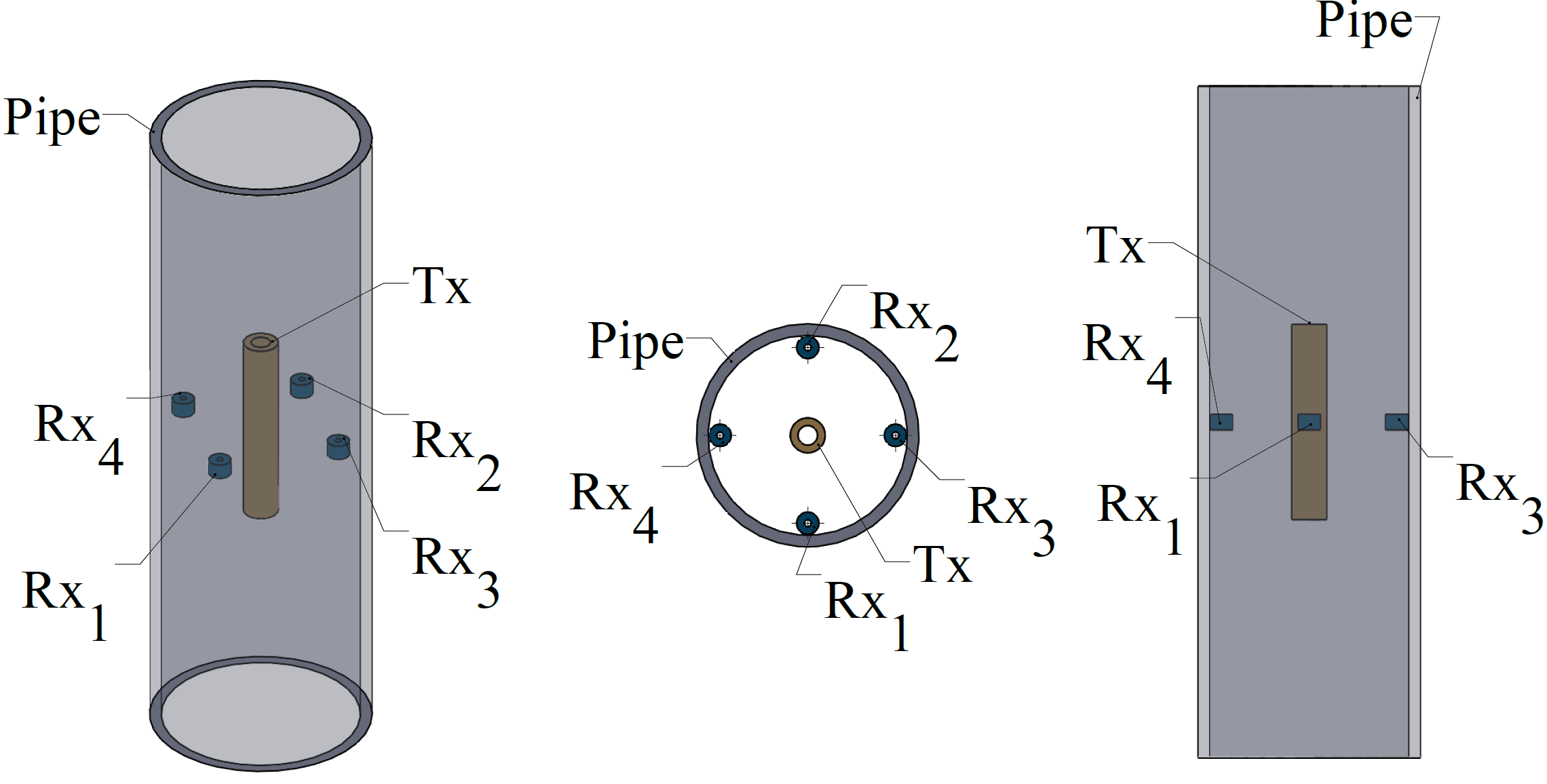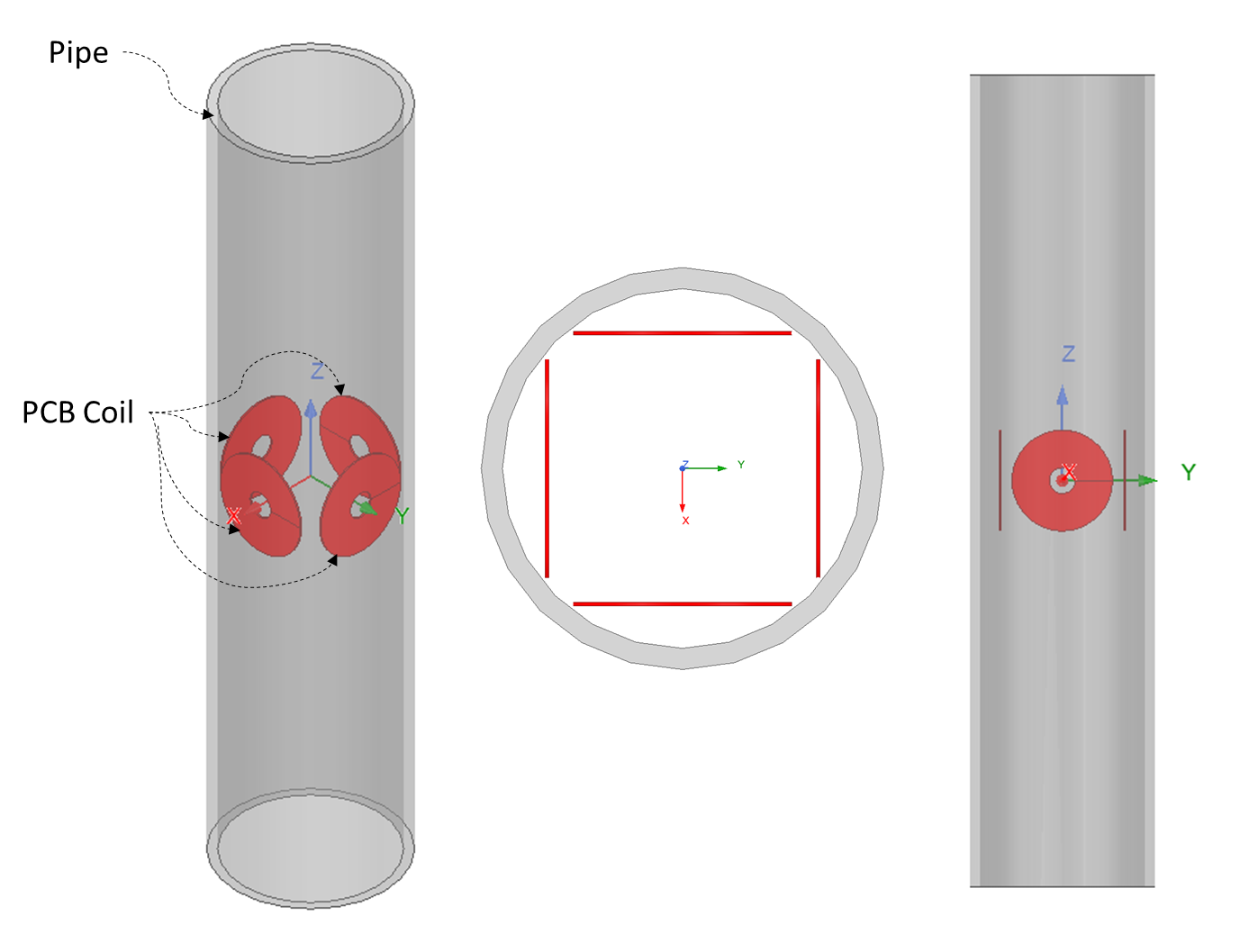Sensing and ML Based Domain Inversion for Metallic and Non-Metallic Pipeline Inspection
Abstract
Ferromagnetic pipelines are crucial for transporting fluids such as oil and gas. Nevertheless, they are prone to defects such as cracks and corrosion, which can jeopardize their integrity and lead to operational failures. To ensure safe and efficient operation, pipelines require regular inspection and maintenance. However, many of the existing inspection techniques have limitations. To address these challenges, we propose novel approaches that employ electromagnetic resonance coupling (Fig. 1) and inductive sensing (Fig. 2) for inspection and monitoring of pipeline defects. Inductive sensing has the additional advantage of eliminating the need for an excitation source and is unaffected by permanent magnet fields.
 Figure 1: Pipeline inspection concept utilizing electromagnetic resonance coupling.
Figure 1: Pipeline inspection concept utilizing electromagnetic resonance coupling.

Figure 2: Pipeline inspection concept utilizing inductive sensing.
The interpretation of sensor measurements is difficult due to their intrinsic nonlinearity with respect to defect characteristics. We have developed various physics-based machine learning frameworks to carry out full domain inversion with very low latency, resulting in cross-sectional images as the sensing assembly progresses in the pipeline1-3. These images are then used to reconstruct the pipeline geometry. This physics-informed data driven approach helps identify patterns in complex data that may not be apparent to human operators. Extension of the methodology to non-metallic applications is a natural extension of this work.
References
- G. Ooi, M. Khater, M. Ozakin, T. Mostafa, H. Bagci and S. Ahmed, “Multi-Frequency Data Acquisition Model and Hybrid Neural Network for Precise Electromagnetic Wellbore Casing Inspection”, SPE-211807-MS, ADIPEC 2022.
- G. Ooi, M. Khater, M. Ozakin, T. Mostafa, H. Bagci and S. Ahmed, “Near-and-Remote Field Eddy Current Data Fusion: Wellbore Casing Inspection with Hybrid Neural Networks”, SPE-211805-MS, ADIPEC 2022.
- G. Ooi, M. Khater, M. Ozakin, T. Mostafa, M. L. Zeghlache, H. Bagci and S. Ahmed, “A Comprehensive and Low-Cost Wellbore Tubing and Pipeline Inspection Tool Using Electromagnetic Coupling and Machine Learning”, SPE Annual Technical Conference and Exhibition, 2022.
Location: Building 19, Level 3, Hall 1-2.
Speakers
Shehab Ahmed
Professor at King Abdullah University of Science and Technology